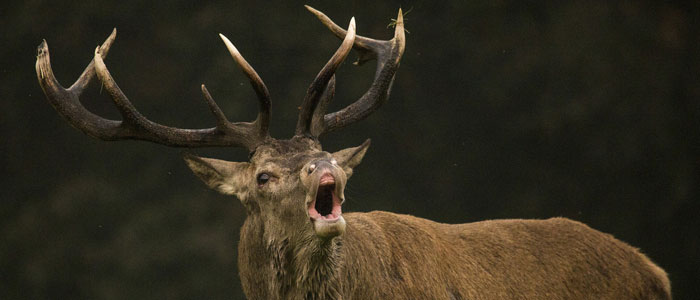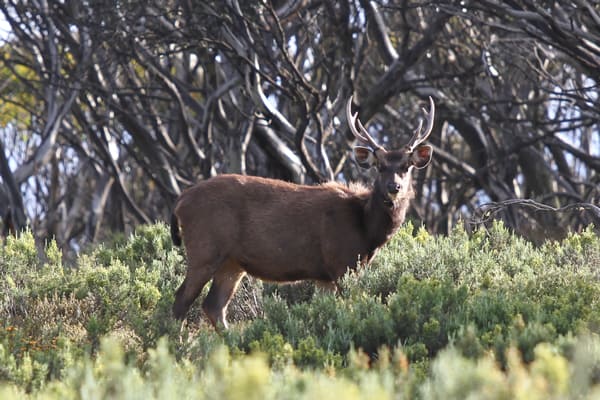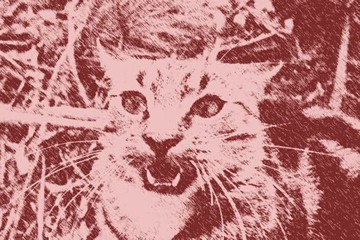
A group of Victorian land managers giving evidence to a Senate inquiry into the impacts of feral deer, pigs and goats put their case bluntly.
“Feral deer do not need managing for sustainable hunting, they need extermination.”
And this.
“To call deer a ‘game’ species is a misnomer, they are a destructive, invasive feral pest species that are multiplying out of control.”
Feral deer are creeping across Australia and little is being done by federal or state governments to limit their impacts or stop their spread.
But a Senate Environment and Communications Committee is looking into the wide-ranging issues.
Already the Senate inquiry has revealed a dichotomy of views on feral deer. Many worry about the impacts of feral deer and are exasperated at the lack of action, others see deer as a hunting resource.
Most submissions to this inquiry fall into the former category.
COVID-19 holdup
The inquiry began in September 2018 to look at the impacts of feral deer, pigs and goats in Australia, and “national priorities to prevent the problems worsening for the natural environment, community and farmers”. It was restarted after the May 2019 federal election and was due to conclude in mid 2020 until COVID-19 delayed planned hearings in Sydney and Cairns. It is now due to conclude in 2021.
We take a look at the key issues raised by the 70 submissions received by the inquiry. The points below have been taken directly from the submissions.
Are deer causing impacts?
Those who experience the impacts of feral deer put it bluntly:
- Tallangatta Valley community: It is obvious to anyone who has spent much time in bushland where deer or pigs are present that both species are significantly upsetting the ecological balance.
- Wollongong City Council: There are significant social and environmental impacts associated with increasing deer numbers in the Wollongong LGA.
- Expanding deer populations in the outer suburbs of Melbourne are significantly increasing environmental, agricultural, cultural and human safety risks and impacts.
- From a whole farm perspective, we estimate deer are conservatively costing our businesses $100,000 annually.
- Feral deer are a major, emerging pest problem in the South East of South Australia damaging the natural environment and impacting on agricultural businesses.
On the other hand, hunting groups deny there is a problem:
- Tasmanian Deer Advisory Committee: There does not appear to be any [negative environmental impacts], which is not to say they do not impact on primary production, nor have they displaced any native species.
- Deer, while currently over-abundant in many areas, are not a pest but rather a species that has lost its economic value in the eyes of some affected groups.
Is hunting effective deer control?
Hunting is not considered an effective strategy except by those who undertake recreational hunting:
- Manningham Council: Ground shooting by hunting groups and affected landowners has a limited impact on deer populations … and has little impact on reduction in deer numbers.
- RSPCA Australia: The RSPCA does not consider recreational hunting to be a justified, effective, sustainable or humane approach to managing deer.
- Agriculture, the environment and community are footing the bill so recreational hunters can pursue their occasional weekend sport.
- Law Council of Australia: This approach [ie recreational hunting] encourages the maintenance of deer populations as a hunting resource, rather than eradication and control to protect natural values or agricultural resources.
Calls for national pest declaration
Where deer impacts are experienced, submitters call for action, including national pest declaration:
- Manningham Council believes current state and national laws, policies and practices are quite ineffective in limiting the spread of deer and mitigating their impacts – this includes the ‘game’ status of sambar, fallow, red and hog deer species under the Victorian Wildlife Act 1975.
- Bush Heritage Australia: Policy settings both federal and state need to be set to maximise environmental protection rather than maintain a viable population of game species for recreational hunters.
There should be no hesitation about declaring wild deer and pigs a pest species, to establish in legislation a responsibility of all land managers…to reduce wild populations of these invasive pest species. The option of “do nothing” should not be considered. - Law Council of Australia: The Committee recommends … legislative amendments to allow feral deer to be managed as pest species in all States and Territories.
By contrast, hunting interests don’t consider the ‘game’ or ‘pest’ distinction is relevant:
- Sporting Shooters’ Association of Australia: Whether or not wild deer are treated as game or a ‘resource’ should not have a significant impact on the ability to control overabundant populations.
- NSW Game and Pest Management Advisory Board: …the current debate around game status of deer in NSW and others states versus pest status is not well informed or warranted.
The department of agriculture was asked by the Senate committee deputy chair why deer were not listed as an established pest of national significance under the Australian Pest Animal Strategy. Such a listing was suggested for consideration by submissions from the National Farmers’ Federation and the Centre for Invasive Species Solutions and others.
The department responded in March 2020 that such a listing could conflict with the game status of deer in NSW, Victoria and Tasmania that offers various levels of protection.
Clearly the conflict between deer as a hunting resource and deer as a pest could not be more apparent. Hunting oriented laws in the south eastern states stymied action while deer populations were low. Now deer populations in these states are covering large proportions of land and still hunting-based thinking is white-anting action.
In a major step forward for pest management the NSW Government recently removed the protected ‘game’ status for feral deer on all private land across the state. In other states where deer are already recognised as a pest, some good policies have been put in place (eg Queensland and South Australia), but implementation has been poor and there is little coordinated action to prevent deer spreading.
Something needs to change.
Like a slow-moving rabbit plague
In trying to stop feral deer spreading across Australia we need to learn from attempts made to stop the spread of rabbits more than 150 years ago.
An extraordinary number of ways of controlling rabbits were proposed, some plain stupid and dangerous like the use of explosives, strychnine and arsenic. Other plans were ambitious, like a rabbit-proof fence at the Western Australia border. And yet they all failed and rabbits spread to all states of Australia. Recreational hunting and commercialisation in particular were abject failures.
Ultimately it was biological control that made the most difference.
One positive aspect is that the slower breeding rate of deer means feral deer invasion will be slower than rabbits. We have more time, however there is less sense of urgency.
Most submissions called for greater effort in research and this will provide improved understanding of impacts, deer behaviour, effectiveness of control measures and the development of new control tools. This may provide relief to those already suffering deer impacts, but will it prevent the six deer species already in Australia from invading all suitable habitat across Australia? Scientific modelling suggests that the entire Australian continent has suitable habitat yet deer cover less 10% of the continent at present.
A grim future
Australia’s national research agency, the CSIRO, has said history and current trends strongly suggest preventing the spread of deer will be difficult.
It also says eradication is not technically feasible at scale.
If we can’t effectively contain deer, then the future will be grim.
One positive development is an attempt by local councils, land managers, natural resource management and landcare groups to keep the NSW Northern Rivers free of feral deer.
By a quirk of history relating to rules preventing deer farms due to the risk of the spread of ticks, today there are few feral deer in east of Kyogle between the Clarence and Tweed valleys. New techniques will be trialled including intensive surveillance and targeted control of deer seeking to colonise the area from existing deer populations in the Lismore area to the south and from the Queensland border to the north.
The Senate inquiry is a chance to work together to address the deer problem. There will be plenty of deer for deer hunters for generations to come, but policies that encourage deer hunting are among the main reasons we are in this diabolical situation.
Only if we put aside the vested interests of those wanting to continue to protect deer as a hunting resource will we find a workable solution.









